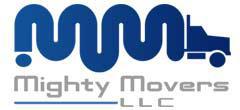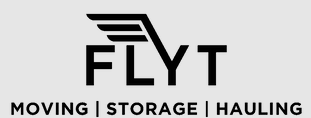LAST REVIEW
<QuerySet [<Review: Vema G., They arrived sp>, <Review: Patty Bay, The best movers>, <Review: I. B., Absolutely the >, <Review: Marilyn Garnto, Terrific group >, <Review: George Taylor, Stay away and c>, <Review: RL Adair, Highly recommen>, <Review: Laura D, Great company, >, <Review: JS, USE ANYONE ELSE>]>
5
1
3
Reviewed <QuerySet [<Review: Vema G., They arrived sp>, <Review: Patty Bay, The best movers>, <Review: I. B., Absolutely the >, <Review: Marilyn Garnto, Terrific group >, <Review: George Taylor, Stay away and c>, <Review: RL Adair, Highly recommen>, <Review: Laura D, Great company, >, <Review: JS, USE ANYONE ELSE>]> times,
customer satisfaction.
United States
Virginia
Stanleytown
USE ANYONE ELSE!!!
I am going to share the letter I sent to the vice president and sales manager of Southwest Virginia Moving and Storage. They broke things, they attempted to overcharge me by 35%, they equipment in disrepair, but worst of all, an entire box was missing (all I know is it contained all my towels - and I believe fragile articles which are gone...but they also STOLE MY LAPTOP. It wasn't expensive and was 3 years old - but they STOLE MY LAPTOP. As you will read - I basically gave them a pass if they just would come fix the piece of equipment they damaged. They chose not to respond - so you get the whole story here.
"I just thought I would let you know, now that I am nearly fully unpacked how much I loathe the experience I had with your company.
First, of course is that your company worked through the rainiest day in August - a set of conditions, particularly with my steps, you had to know would result in a longer workday than you anticipated. Rather than reschedule so that the charges would be in line with the estimate, your company chose to just work through the rain, and charge me 35% more than the job should have required.
The workers broke an irreplaceable vase/sculpture, which I largely ignored. BUT ...after they left, it got much worse. I realized they dismantled my Powerplate to move it, but did not reassemble it. This is a multiple person job as it is very heavy, (IT DID NOT REQUIRE DISMANTLING)...only a dolly which is how it got into the house I was in. They LEFT IT DISMANTLED. This is a $9000 piece of equipment that I cannot use until it is reassembled - so when the delivery guys from Lowes came with my washer and dryer, they attempted to reassemble, but two of the three bolts that hold it together were immediately identified as damaged - cross threaded. Probably why your people left without reassembling.
I waited until now to contact you because I wanted to have unpacked ALL my boxes. Why? Because my laptop is missing. Ne. stolen. Not an expensive laptop but it is gone. As is the box it was in with all my bath towels. I don't remember what else was in the box. The towels were old and of little value. The laptop was only about $350 new. But the problem is all is missing. It was less than a mile's drive between homes. Stuff doesn't fall off the truck. But it is the Powerplate situation that REALLY has me upset. There was NO REASON to dismantle it. But once dismantled, it ABSOLUTELY SHOULD HAVE BEEN RESTORED TO OPERATING CONDITION!!!
I would have contacted you sooner, but I wanted to make sure my assertion that the laptop and box with towels and who knows what else were in fact GONE. Judging by the way the company handled the rain/billing situation, I don't expect satisfaction - but if you get your people to my house (NOT the ones who stole from me) to reassemble and make right the Powerplate, I won't share the meat of this email with every review site I can find. If you don't want to
LAST REVIEW
<QuerySet [<Review: Maria Topilina, Wow, they did a>, <Review: Priyanka Misri, Ali and his gro>, <Review: Gina Cordle, Marvin, Alex, J>, <Review: Alex, Jose and Wilson>, <Review: Alex, Jose and Wilson>, <Review: Steve Marcus, Very nice frien>, <Review: Joe, Amazing and ver>, <Review: Heather Edward, Hard workers.>]>
5
1
5
Reviewed <QuerySet [<Review: Maria Topilina, Wow, they did a>, <Review: Priyanka Misri, Ali and his gro>, <Review: Gina Cordle, Marvin, Alex, J>, <Review: Alex, Jose and Wilson>, <Review: Alex, Jose and Wilson>, <Review: Steve Marcus, Very nice frien>, <Review: Joe, Amazing and ver>, <Review: Heather Edward, Hard workers.>]> times,
customer satisfaction.
United States
Virginia
Manassas
LAST REVIEW
<QuerySet [<Review: Danica A., They were astou>, <Review: Leanne A, The movers over>, <Review: Sholeh Koru, Excellent compa>, <Review: Lashay Curtese Johnson, They where the >, <Review: Michelle Capel, You are the bes>, <Review: Michelle Capel, Thanks good job>, <Review: Michelle Capel, Thanks good job>]>
5
1
5
Reviewed <QuerySet [<Review: Danica A., They were astou>, <Review: Leanne A, The movers over>, <Review: Sholeh Koru, Excellent compa>, <Review: Lashay Curtese Johnson, They where the >, <Review: Michelle Capel, You are the bes>, <Review: Michelle Capel, Thanks good job>, <Review: Michelle Capel, Thanks good job>]> times,
customer satisfaction.
United States
Virginia
Clemmons
LAST REVIEW
<QuerySet [<Review: Alen C, Okay.... This i>, <Review: April McAndrew, Mighty Movers L>, <Review: April McAndrew, Mighty Movers L>, <Review: Brian McField, These guys rock>, <Review: Emma Castro, Due to Covid, I>, <Review: Mike Schiffer, I needed a movi>]>
5
1
5
Reviewed <QuerySet [<Review: Alen C, Okay.... This i>, <Review: April McAndrew, Mighty Movers L>, <Review: April McAndrew, Mighty Movers L>, <Review: Brian McField, These guys rock>, <Review: Emma Castro, Due to Covid, I>, <Review: Mike Schiffer, I needed a movi>]> times,
customer satisfaction.
United States
Virginia
Merrifield
I needed a moving company ASAP and they assisted me right away and got us booked on a short notice. They arrived between the window they gave me. I would definitely call them again. The service was amazing. Movers are professional and got job done quickly. Super efficient and quick!
LAST REVIEW
<QuerySet [<Review: Edward Marnay, These guys are >, <Review: Hailey A., Excellent servi>, <Review: Arthur Mitchell, Wonderful servi>, <Review: Anna Cofey, Scheduling the >, <Review: Pam Horvath, Great experienc>, <Review: Daniyal S., FLYT Moving pro>]>
5
1
5
Reviewed <QuerySet [<Review: Edward Marnay, These guys are >, <Review: Hailey A., Excellent servi>, <Review: Arthur Mitchell, Wonderful servi>, <Review: Anna Cofey, Scheduling the >, <Review: Pam Horvath, Great experienc>, <Review: Daniyal S., FLYT Moving pro>]> times,
customer satisfaction.
United States
Virginia
Merrifield
FLYT Moving provided excellent service in packing many of my valuable collection items; loading, moving, and unloading the contents of my 4 bedroom home. The team arrived on time and performed all of the work on a timely manner. Their price was very competitive. They provided a binding quote unlike other experiences we had with movers, we actually received a reduction in final price because they finished sooner than estimated. I would strongly recommend and use them again if we ever move again.
LAST REVIEW
<QuerySet [<Review: Eva A., They were fabul>, <Review: Michael Brubaker, I as of late co>, <Review: Cindy McKinnis, The convey was >, <Review: Kentoria Pickett, This company ha>, <Review: Gregory Miesse, DO NOT USE THIS>]>
5
1
3
Reviewed <QuerySet [<Review: Eva A., They were fabul>, <Review: Michael Brubaker, I as of late co>, <Review: Cindy McKinnis, The convey was >, <Review: Kentoria Pickett, This company ha>, <Review: Gregory Miesse, DO NOT USE THIS>]> times,
customer satisfaction.
United States
Virginia
Waverly
DO NOT USE THIS COMPANY!!!!!!!!!
1ST MOVE, 3 PACKERS LEFT BEFORE STARTING FELT THAT THEY WERE NOT GOING TO MAKE ENOUGH MONEY. WORKERS GET PAID BY THE POUND. MOVE WAS SUPPOSED TO START AT 9:00 am . FINALLY 3 WORKERS SHOWED UP AT 12:30. 2 MORE WORKERS SHOWED UP AT 5:30. WE LEFT HOUSE AT 10:30 AT NIGHT.
2ND MOVE TO NEW HOUSE. I WAS TOLD BY MIKE AT HARRISON'S THAT THE MOVE WOULD START BETWEEN 9:00 AND 11:00 am. 3 WORKERS SHOWED UP TO ADDRESS, BUT THE WORKERS WERE TOLD THAT THE WEIGHT OF THE MOVE WAS 7000 LBS. WHICH IT REALLY IS 15000 LBS. THEY CALLED THE SUPERVISOR FOR THE DRIVER OF TRUCK WHICH TOLD THEM "THEY WEREN'T SUPPOSED TO BE AT THAT ADDRESS". IT TOOK THE WORKERS 2 HOURS TO DRIVE FOR THIS JOB. MY QUESTION IS HOW DID THE WORKERS GET THE ADDRESS IF THEY WERE NOT SUPPOSED TO BE THERE? DRIVER TOLD MY WIFE THAT THE ANOTHER SET OF 4 WORKERS ARE ON THERE WAY WHICH IS AGAIN OVER 2 HOURS AWAY. IT IS NOW 2:00 pm AND STILL NO WORKERS, SO DRIVER GOT TIRE OF WAITING AND STARTED THE UNLOAD. WIFE IS GIVING HIM A HAND. NO WEEKEND EMERGENCY NUMBER FOR HARRISON'S OR MIKE THE SUPERVISOR FOR THE MOVE THAT IS RESPONSIBLE FOR THIS FIASCO . MIKE WON'T RETURN MY CALL OR ANSWER HIS PHONE. I HAVE NEVER BEEN TREATED BY A COMPANY IN MY LIFE LIKE THIS. IT IS TOO BAD I CAN'T GIVE A NEGATIVE STAR RATING. I HAD TO POST 1 STAR OR I COULD NOT SEND THIS POST.
I THOUGHT I WAS USING A REPUTABLE COMPANY. AGAIN DO NOT USE THEM!!!!!
GREG
LAST REVIEW
<QuerySet [<Review: Stacey K, From the move c>, <Review: Claire B, We hired Still >, <Review: Karen Kanitkar, If you want to >, <Review: Scott Roller, Hired Still Tra>, <Review: Mike, Moved us from F>]>
5
1
4
Reviewed <QuerySet [<Review: Stacey K, From the move c>, <Review: Claire B, We hired Still >, <Review: Karen Kanitkar, If you want to >, <Review: Scott Roller, Hired Still Tra>, <Review: Mike, Moved us from F>]> times,
customer satisfaction.
United States
Virginia
Saltville
Moved us from FL to VA
Did a great job on time and reasonable
Very nice crew
LAST REVIEW
<QuerySet [<Review: Mark Muster, Fantastic mover>, <Review: Fanny Li, it doesn't wort>, <Review: Ben, Great service, >, <Review: Jivi, Great Service, >]>
5
1
4
Reviewed <QuerySet [<Review: Mark Muster, Fantastic mover>, <Review: Fanny Li, it doesn't wort>, <Review: Ben, Great service, >, <Review: Jivi, Great Service, >]> times,
customer satisfaction.
United States
Virginia
Alexandria
Great Service, Great Price, Great Quality!
Bobby and his crew did incredible job. All movers were very professional, they moved us quickly, nothing was damaged and for the amazing service, the price was excellent. We will definitely recommend them and surely use them again.
LAST REVIEW
<QuerySet [<Review: Stephanie W., This was the pr>, <Review: Stephanie W., This was the pr>, <Review: Richard Lennon, 5 STARS !!
J>, <Review: Richard Lennon, 5 STARS !!
J>]>
5
1
4
Reviewed <QuerySet [<Review: Stephanie W., This was the pr>, <Review: Stephanie W., This was the pr>, <Review: Richard Lennon, 5 STARS !!
J>, <Review: Richard Lennon, 5 STARS !!
J>]> times,
customer satisfaction.
United States
Virginia
Woodford
5 STARS !!
J Barber came to me highly recommended, and my own experience strongly supports this !! From my first contact with Kate, my customer liaison manager, planning and carrying out my move has been easy and pleasant. The moving crews at both pickup and delivery arrived on time, worked with energy and purpose, and took great care for the safekeeping of my goods and property.
When my Closing and Delivery were delayed through no fault of mine, the Company was most reasonable in accommodating my need for reschedule. Team leaders Carrie and Woody, and individual Crew members, were all most cooperative and helpful throughout the process.
J Barber Moving and Storage has my very highest recommendation !!
LAST REVIEW
<QuerySet [<Review: Ingrid H., I have gotten t>, <Review: Shannon G, O K was contrac>, <Review: Wes M, OK Moving and S>, <Review: John Kiger, Their drivers s>]>
5
1
2
Reviewed <QuerySet [<Review: Ingrid H., I have gotten t>, <Review: Shannon G, O K was contrac>, <Review: Wes M, OK Moving and S>, <Review: John Kiger, Their drivers s>]> times,
customer satisfaction.
United States
Virginia
Norfolk
Their drivers seem to thi k it is funny to sit and joke around at the gas pump while other companies are waiting to fill uo. As the driver was laughing while pulling away. If they are that rude and unprofessional just filing up on gas i would hate yo see what they do woth their clients items.
LAST REVIEW
<QuerySet [<Review: Teresa, Liars don't use>, <Review: Dan Fioramonti, Garbage movers.>, <Review: Marcie, Terrible! Do No>]>
5
1
1
Reviewed <QuerySet [<Review: Teresa, Liars don't use>, <Review: Dan Fioramonti, Garbage movers.>, <Review: Marcie, Terrible! Do No>]> times,
customer satisfaction.
United States
Virginia
Redwood
Terrible! Do Not Use This Company. I paid for a mobile home to be moved and set up. Only half the job was done yet Bobby the owner refuses to give a refund of any kind.
LAST REVIEW
<QuerySet [<Review: Nasia Hunsaker, This move has b>, <Review: Richard Walton, The moving team>, <Review: Gunner D, Never polite, B>]>
5
1
3
Reviewed <QuerySet [<Review: Nasia Hunsaker, This move has b>, <Review: Richard Walton, The moving team>, <Review: Gunner D, Never polite, B>]> times,
customer satisfaction.
United States
Virginia
Woodbridge
Never polite, Been waiting for claim from company for my sister for 3 weeks. Jenny is here name if you don't help I will write another review at one star. get your act together over there.
LAST REVIEW
<QuerySet [<Review: Ann A., They were solid>, <Review: Bill D., Leslie Acker, p>, <Review: Don S., Little Guys is >]>
5
1
4
Reviewed <QuerySet [<Review: Ann A., They were solid>, <Review: Bill D., Leslie Acker, p>, <Review: Don S., Little Guys is >]> times,
customer satisfaction.
United States
Virginia
Clemmons
Little Guys is a completely astounding moving company! They went well beyond, ensuring everything was precisely right, even to the point of repairing furniture that was not assemble accurately in any case! Not just did I get an extraordinary value, I got phenomenal, cordial, and expert administration. I would prescribe them to anybody.
LAST REVIEW
<QuerySet [<Review: Kelly , On-time, fast, >, <Review: John, Great service. >, <Review: Larry, Amazing job!!! >]>
5
1
4
Reviewed <QuerySet [<Review: Kelly , On-time, fast, >, <Review: John, Great service. >, <Review: Larry, Amazing job!!! >]> times,
customer satisfaction.
United States
Virginia
Chantilly
Amazing job!!! Made our moving day easy and simple. Honest and polite movers.
LAST REVIEW
<QuerySet [<Review: Ayannah B., Thanks Ace for >, <Review: Dennis R., As trying and o>, <Review: S Carter, These guys were>]>
5
1
5
Reviewed <QuerySet [<Review: Ayannah B., Thanks Ace for >, <Review: Dennis R., As trying and o>, <Review: S Carter, These guys were>]> times,
customer satisfaction.
United States
Virginia
Woodbridge
These guys were great- very efficient, hard workers, careful with our stuff, wrapped up all the furniture. They went way above expectations. I would highly recommend.















